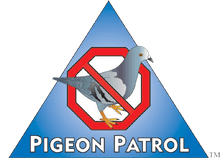
by Pigeon Patrol | Oct 20, 2020 | Pigeon Control, Pigeon Patrol's Services, Pigeons in the News
Facts About The Pigeon
If you live on earth, chances are you’ve seen a pigeon before, if not on the daily. But do you really know anything about the pigeon other than the fact that they leave their droppings everywhere? (Which could be really annoying. Check out our products here https://www.pigeonpatrol.ca/) Here are 5 cool facts about pigeons you may have not known!
1) AT ONE POINT, MORE THAN ONE-QUARTER OF ALL THE BIRDS LIVING IN THE U.S. MAY HAVE BEEN PASSENGER PIGEONS
The passenger pigeon or wild pigeon is an extinct species of pigeon that was endemic to North America. Its common name is derived from the French word passager, meaning “passing by”, due to the migratory habits of the species. The scientific name also refers to its migratory characteristics
Wild/feral rock pigeons reside in all 50 states, which makes it easy to forget that they’re invasive birds. Originally native to Eurasia and northern Africa, the species was (most likely) introduced to North America by French settlers in 1606. At the time, a different kind of columbiform—this one indigenous—was already thriving there: the passenger pigeon (Ectopistes migratorius). As many as 5 billion of them were living in America when England, Spain, and France first started colonizing, and they may have once represented anywhere from 25 to 40 percent of the total U.S. bird population. But by the early 20th century, they had become a rare sight, thanks to overhunting, habitat loss, and a possible genetic diversity issue. The last known passenger pigeon—a captive female named Marth who died on September 1, 1914.

SOURCE
2) THEY CAN FIND THEIR WAY BACK TO THE NEST FROM OVER 2000KM AWAY
Another cool fact about pigeons is they have extraordinary navigational abilities. Take a pigeon from its loft and let it go somewhere it has never been before and it will, after circling in the sky for while, head home. This remarkable capacity extends to places tens even hundreds of kilometers from its home and is all the more remarkable to humans because we are apparently incapable of it ourselves.
But we have long made use of the pigeon’s homing ability, principally for carrying messages in the past. And for several decades now the pigeon has played center stage in scientists’ attempts to understand the map and compass mechanisms fundamental to bird navigation.
We’ve now learn that pigeons repeatedly released from the same site soon learn a habitual route home which they stick to faithfully even if it is not the quickest. Different individuals learn, and stick to, different routes. Routes often follow linear landscape features, such as roads or field margins, but are learnt most effectively over landscapes of intermediate complexity. This means that urban landscapes may in fact be too complex for optimum route learning.
Pair birds with different ideas about how to get home from the same place and the result is an elegant exposé of each bird’s propensity to lead out or follow others. Birds that are more faithful to their own route when homing alone are more likely to emerge as leaders when homing socially.
So if the pigeon’s brain contains a network of learnt routes, how are these memories acquired and how do they interact? Recently, my colleagues Andrea Flack and Dora Biro showed that having to learn three routes in parallel doesn’t cause pigeons any additional confusion. Route-learning is memorized independently, regardless of whether the sites they are released from are encountered sequentially, randomly intermingled or in strict rotation.
Treating the art of pigeon homing as a natural learning laboratory is a new science into which we are just taking the first steps, and it seems that we have yet to find the boundaries of the bird’s abilities. Clearly, we still have much to learn from the pigeon.
On to the next pigeon facts
3) PIGEONS WERE USED AS MESSENGERS
Pigeons were effective as messengers due to their natural homing abilities. The pigeons were transported to a destination in cages, where they would be attached with messages, then the pigeon would naturally fly back to its home where the recipient could read the message.
The earliest large-scale communication network using pigeons as messengers was established in Syria and Persia around the 5th century BC. Much later, in the 12th century AD, the city of Baghdad and all the main towns and cities in Syria and Egypt were linked by messages carried by pigeons. This was the sole source of communication. In Roman times the pigeon was used to carry results of sporting events, such as the Olympic Games, and this is why white doves are released at the start of the Olympic Games today. In England, prior to the days of telegraphs, pigeons were often taken to football matches and released to carry home the result of the game. Their use as a messenger in wartime resulted in many pigeons being awarded honors by both the British and French Governments. Incredibly, the last ‘pigeon post’ service was abandoned in India in 2004 with the birds being retired to live out the rest of their days in peace.
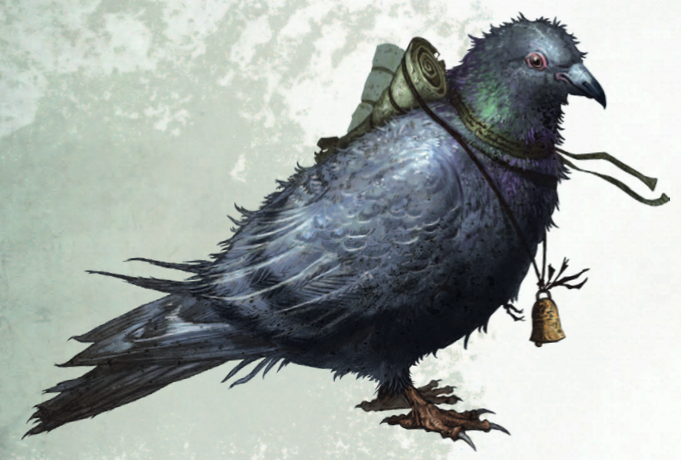
4) THEY SAVED THOUSANDS OF HUMAN LIVES DURING WORLD WARS I AND II.
Pigeons’ homing talents continued to shape history during the 20th century. In both World Wars, rival nations had huge flocks of pigeon messengers. (America alone had 200,000 at its disposal in WWII.) By delivering critical updates, the avians saved thousands of human lives. One racing bird named Cher Ami completed a mission that led to the rescue of 194 stranded U.S. soldiers on October 4, 1918.
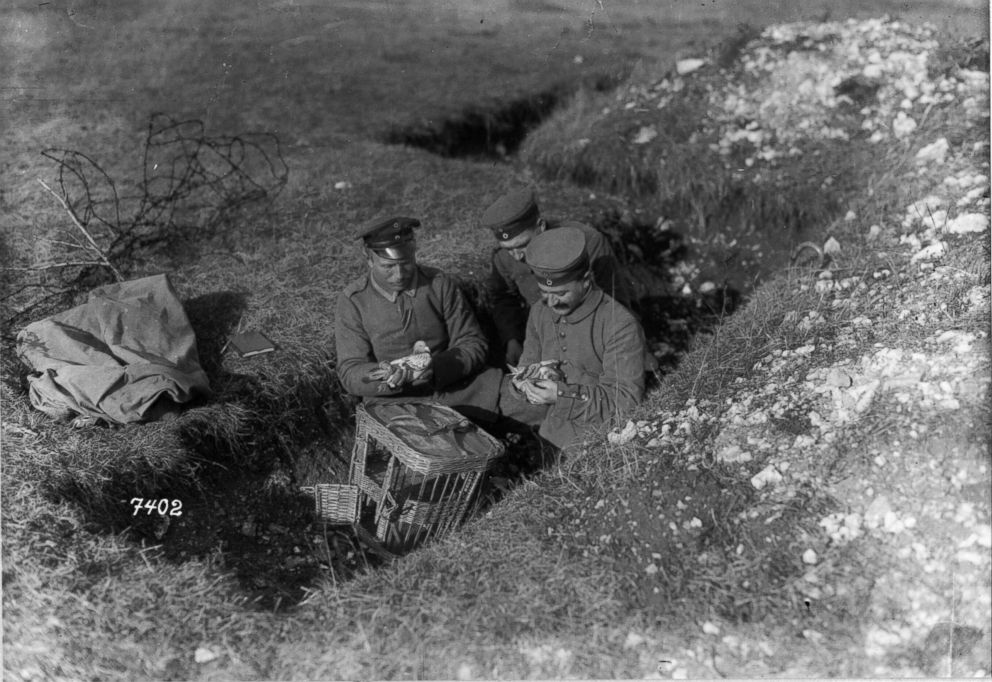
5) THEY MIGHT BE THE FIRST DOMESTICATED BIRD.
The common city pigeon (Columba livia), also known as the rock pigeon, might be the first bird humankind ever domesticated. You can see them in art dating back as far as 4500 BCE in modern Iraq, and they’ve been a valuable source of food for thousands of years. The rock pigeon is the world’s oldest domesticated bird. Mesopotamian cuneiform tablets mention the domestication of pigeons more than 5,000 years ago, as do Egyptian hieroglyphics. Research suggests that domestication of pigeons occurred as early as 10,000 years ago.
And there you have it! 5 Cool facts about pigeons! Which one was new to you?
About Pigeon Patrol:
Pigeon Patrol Products & Services is the leading manufacturer and distributor of bird deterrent (control) products in Canada. Pigeon Patrol products have solved pest bird problems in industrial, commercial, and residential settings since 2000, by using safe and humane bird deterrents with only bird and animal friendly solutions. At Pigeon Patrol, we manufacture and offer a variety of bird deterrents, ranging from Ultra-flex Bird Spikes with UV protection, Bird Netting, 4-S Gel and the best Ultrasonic and audible sound devices on the market today.
Contact us at 1- 877– 4– NO-BIRD, (604) 585-9279 or visit our website at www.pigeonpatrol.ca
Bird Gone, Pigeon Gone, Seagull Gone, Pigeon problems, pigeon spikes, 1-877-4NO-BIRD, 4-S Gel, Bird Control, Pigeon Control, bird repellent, Bird Spikes, sonic bird repellent, stainless steel bird spikes, bird spikes Vancouver, Ultra Sonic Bird Control, Bird Netting, pigeon facts Plastic Bird Spikes, Pigeon Fact, Canada bird spike deterrents, Pigeon Pests, B Gone Pigeon, Pigeon Patrol, pest controller, pest control operator, pest control technician, Pigeon Control Products, humane pigeon spikes, pigeon deterrents, pigeon traps, Pigeon repellents, Sound & Laser Deterrents, wildlife control, pigeon facts raccoon, skunk, squirrel deterrent, De-Fence Spikes, Dragons Den, Canada bird spikes, Canada pigeon, pigeon control, pidgon patrol, pigeon. Kill pigeons, crow, starling, Pigeon Habitat, Cool Facts About Pigeons, Pigeon Facts
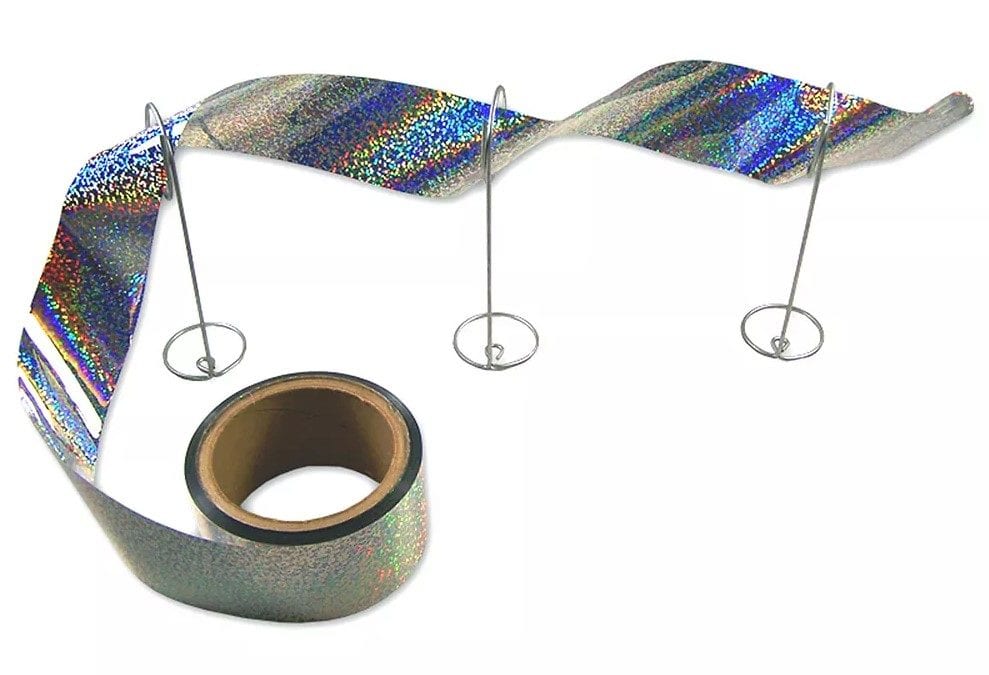
by Pigeon Patrol | Oct 20, 2020 | Bird Deterrent Products, Pigeon Control
Budget Friendly Pigeon Deterrents
Looking to try more pigeon deterrents to see which one works best for you? First off, Pigeons have excellent eyesight & are startled by unexpected visual signals or recognizable predators. Here are 3 budget friendly bird deterrent products that could help you keep these pests and other birds such as sparrows, and crows away from your property
1) Magnetic Bird Defender
Thanks to technological innovations, you can find several kinds of equipment to scare birds away. One is you can use this powerful magnet to repel the birds. This magnet is flashy and interferes with the birds’ sense of direction and confuses them which will cause them to stay away from the radius of the magnet’s field. The number of magnets or their strength will depend on the size of your property. Pigeons and other birds tend not to approach any area where there is a magnetic field stronger than the terrestrial magnetic field. You can hang these on your balcony, porch, front door, wherever these pests may be
Get your magnetic bird defender here https://www.pigeonpatrol.ca/product/magnetic-bird-defender/
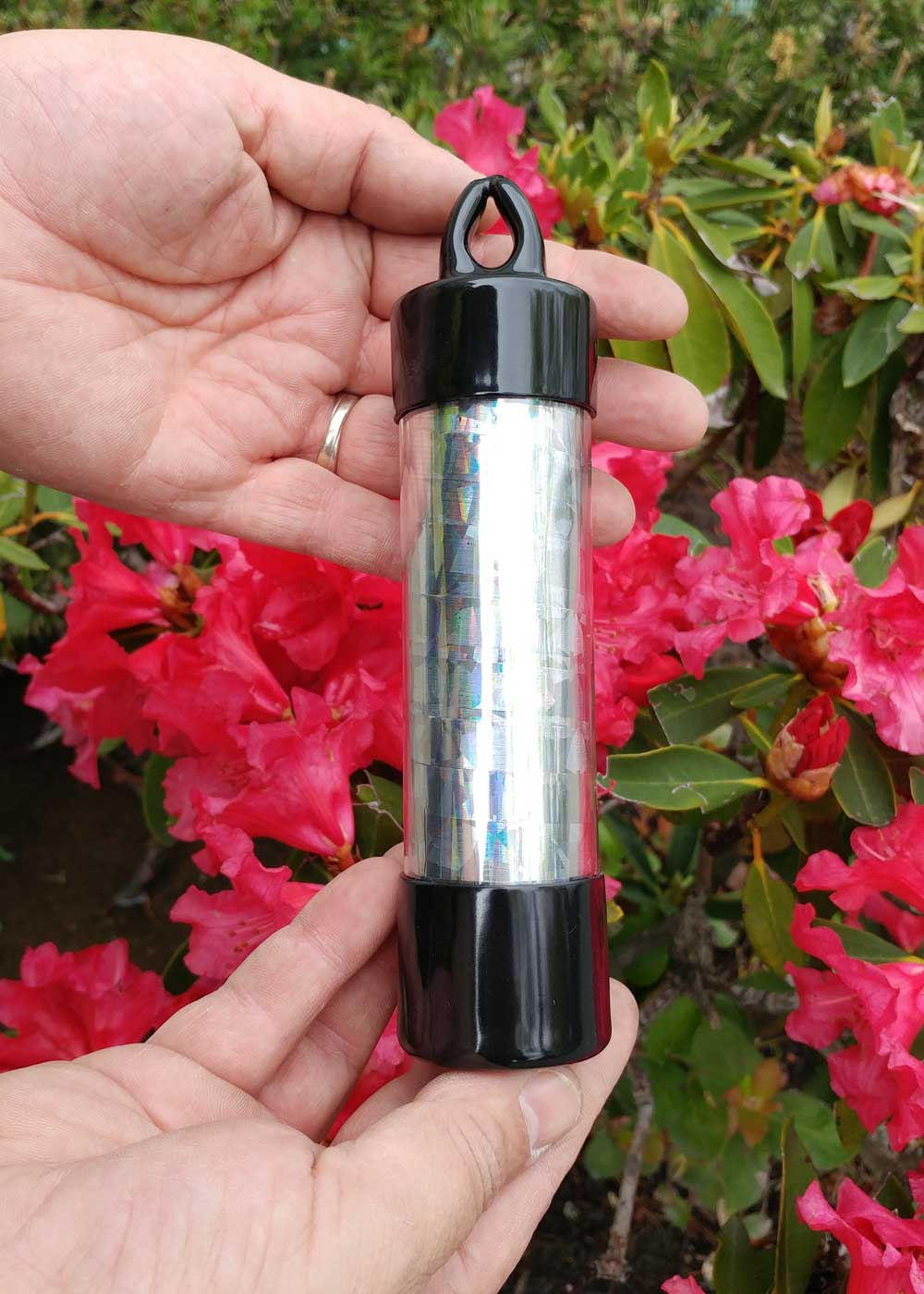
Source
2) Reflective Owl Repellent
These owl repellents are budget friendly and effectively scares birds away because of the reflective print. The pigeon’s eye is one-half the weight of its brain, whereas man’s eye is only one-fiftieth of his brain weight. Pigeons have a very wide visual field of around 340° compared to the 180°of humans. So when they come across these reflective owls, there eyes get irritated and they can’t stand it. Another reason why these owls are effective is simple: Owls prey on pigeons and pigeons are not the smartest things on wings. Confronted with something that looks like an owl, a pigeon will assume the worst and fly away. The ruse is hardly new. For years, gardeners and boaters have used fake owls to scare off birds. This owl-shaped surface contains hundreds of three-dimensional light-refraction spots. When the sunshine comes to this surface, it is immediately reflected in various rays of colors. Additionally, each decoy is attached with two hawk bells, and these will unpredictably emit sounds to startle the birds
CALL US TO ORDER THESE REFLECTIVE OWLS (604) 585-9279

3) Reflective Ribbons
One of the classic and primary tools is the bird repellent tape, This is another bird control applying the refractive holographic technique on both sides. This tape is about 5 centimeters width and nearly 100 meters long, which is enough to cover my backyard. It does not consume much of my time and effort to hang up the tapes. I cut them into strips about 40 centimeters long, and stick them to the wall with layers of adhesive tapes, or tight with thin rope, dental floss, any kind of thin string appearing in my kitchen. Or I sometimes cut them into approximately one-meter strips and tight upon the tree branches. Actually, it is not compulsory to hang on the highest spots, but scare tape should be directly contacted with sun rays and wind so that they could flail wildly to create flashing light and flapping sound.
CALL US TO ORDER THESE REFLECTIVE TAPES (604) 585-9279
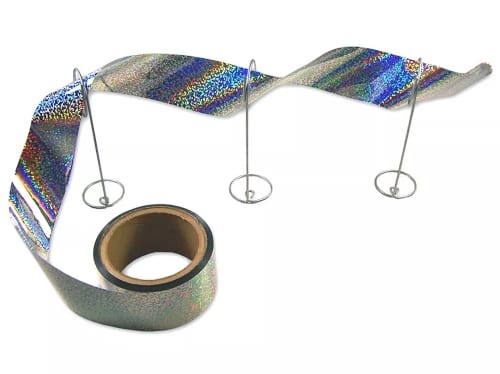
With visual deterrents, surprise & change are vital. Birds quickly acclimate to static scares, so we don’t sell them. Pigeon Patrol has these visual products that contain some element of change or movement, making them more effective than the stationary units offered in the marketplace. For large areas, use more visuals — either the same type or a variety. Change the location of your visual deterrents from time to time to maintain its effectiveness in keeping away the bird pests.
About Pigeon Patrol:
Pigeon Patrol Products & Services is the leading manufacturer and distributor of bird deterrent (control) products in Canada. Pigeon Patrol products have solved pest bird problems in industrial, commercial, and residential settings since 2000, by using safe and humane bird deterrents with only bird and animal friendly solutions. At Pigeon Patrol, we manufacture and offer a variety of bird deterrents, ranging from Ultra-flex Bird Spikes with UV protection, Bird Netting, 4-S Gel and the best Ultrasonic and audible sound devices on the market today.
Contact us at 1- 877– 4– NO-BIRD, (604) 585-9279 or visit our website at www.pigeonpatrol.ca
Bird Gone, Pigeon Gone, Seagull Gone, Pigeon problems, pigeon spikes, 1-877-4NO-BIRD, 4-S Gel, Bird Control, Pigeon Control, bird repellent, Bird Spikes, sonic bird repellent, stainless steel bird spikes, bird spikes Vancouver, Ultra Sonic Bird Control, Bird Netting, Plastic Bird Spikes, Canada bird spike deterrents, Pigeon Pests, B Gone Pigeon, Pigeon Patrol, pest controller, pest control operator, pest control technician, Pigeon Control Products, humane pigeon spikes, pigeon deterrents, pigeon traps, Pigeon repellents, Sound & Laser Deterrents, wildlife control, raccoon, skunk, squirrel deterrent, PIGEON DETERRENTS, De-Fence Spikes, Dragons Den, Canada bird spikes, Canada pigeon, pigeon control, pidgon patrol, pigeon. Kill pigeons, crow, starling, Pigeon Habitat
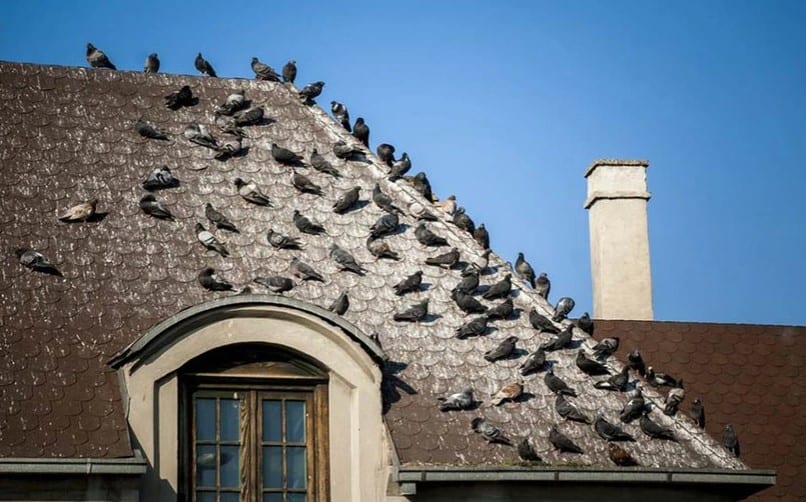
by Pigeon Patrol | Oct 20, 2020 | Bird Deterrent Products, Bird Netting, Bird Spikes, Pigeon Droppings, Pigeon Spikes
Danger of Pigeon Droppings
Although pigeons themselves are not considered to be a danger to humans, their droppings is a different story. Pigeons transmit diseases through their droppings and can easily affect someone with a weakened immune system if near by.
Pigeon droppings that are infected with bacteria or viruses are often left on the street, windowsills and cars to dry out. Once they do, they become a powder, which is blown or kicked into the air and then inhaled. The inhalation of this powder is one way that the pathogens that can cause disease can be spread to us.
Pathogens
According to Medical News Today, the most common pathogens which can cause disease transmitted from pigeons to humans are:
- E. coli. This occurs when bird droppings land in a water or food supply and are then consumed by humans. This can typically be avoided by washing food thoroughly before eating. Symptoms include nausea, fever and cramps.
- St. Louis encephalitis.This disease is spread by mosquitoes after they feed on a bird that carries the pathogen that spreads St. Louis encephalitis. This inflammation of the nervous system is dangerous to all age groups, but can be particularly dangerous and even fatal in adults over 60 years old. Symptoms include drowsiness, headache and fever.
- Histoplasmosis.This respiratory disease occurs as a result of a fungus growing in pigeon droppings and can be fatal.
- Candidiasis.This disease is also a respiratory condition caused by a fungus or yeast found in droppings. The areas affected include skin, mouth, the respiratory system, intestines and the urogenital tract, particularly in women.
- Salmonellosis.This disease is commonly called “food poisoning” and spreads via infected droppings turning into dust and contaminating food and food preparation surfaces prior to consumption.
Pigeons are also carriers of mites, fleas, and West Nile virus, and all of which can cause discomfort and potentially serious health issues in humans.
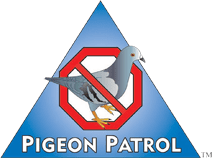
If you are cleaning up or come into contact with droppings, you should take precautions. Wash your hands and clean any exposed skin before eating, drinking or putting your hands near your mouth. Likewise, if you are feeding or handling birds, wash your hands afterwards. If you have a compromised immune system, including from HIV/AIDS or cancer, you should not clean up droppings.
Destroys Cleanliness of Property
Pigeon droppings are unsightly and can cause problems by making pavements and steps slippery, particularly in wet weather. Droppings can also corrode stonework and damage buildings. Nesting material, droppings and dead birds may block gutters and drains leading to water damage to buildings. Pigeon droppings are quite high in uric acid, which corrodes car exteriors like no one’s business. With an average pH of about 3, dried bird poop will peel away clearcoats, bleach paint, and leave cartoonish etchings of itself even after a car wash.
Pigeon droppings can cause severe damage to not just your roof but also other parts of your house. Some of the havoc birds poop can cause to your roof include:
Uric Acid
Bird poop contains uric acid, which can damage your roof. Since birds don’t urinate, the only way they could get rid of nitrogenous waste from their body system is through their poop. The acidic content of the white liquid can wreak havoc on materials like concrete, car paint, and roofing materials. The most vulnerable roof material to uric acid is the asphalt shingles.
Effect on Solar Panel
Roof-mounted solar panels have become a modern haven for pigeons and other bird species. This is so because solar panels provide warmth and shelter from the wind and rain. More so, it is a perfect spot for nesting, which ultimately results in massive bird dropping problems. Apart from the fact that these birds cause damage to the solar panel wiring, they also create a mess by leaving their droppings on top of them. These droppings, if left to sit for an extended period of time , blight solar panels and can render the system useless.
Blocked Gutters
Pigeons picking on dried poop for bugs can drop these waste into your gutters. These bird droppings contain seeds that may likely create additional problems for your drainage system. When a bird poop is left for long on your roof, wind or rain may eventually wash the bird poop and seeds into the gutters. These seeds can grow into weeds and shrubs in the gutter given the right conditions, thus affecting the flow of water. A clogged gutter will eventually lead to roof leakages. So make sure you clean your gutters regularly to ensure that they are free of debris and other waste products left by pigeons.
Moss Growth
Moss thrives in shady, damp places and are commonly found on the roof. Failure to tackle moss growth heads on can result in water leaks and damage. In addition, it can clog your drainage and gutters. Moss retains moisture, and this could further hamper the efficiency of your roof materials. What is for certain is that if birds and pigeons regularly leave droppings on your roof, the moss problem can be difficult and more expensive to contain. The nutrients from pigeon poop stimulate moss growth. More reasons why you need to get rid of pigeons and bird pests from your roof.
Bird Laws
Some laws protect native birds. So you need to follow laid down protocols when getting rid of them. Some of the legal methods of preventing birds nesting on your roof include roof spikes and bird deflectors. If you don’t want to face the wrath of the law, then make sure you contact reputable bird control service for assistance. Read More About Bird Laws Here
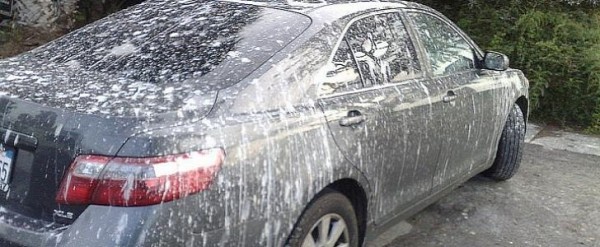
Source
About Pigeon Patrol:
Pigeon Patrol Products & Services is the leading manufacturer and distributor of bird deterrent (control) products in Canada. Pigeon Patrol products have solved pest bird problems in industrial, commercial, and residential settings since 2000, by using safe and humane bird deterrents with only bird and animal friendly solutions. At Pigeon Patrol, we manufacture and offer a variety of bird deterrents, ranging from Ultra-flex Bird Spikes with UV protection, Bird Netting, 4-S Gel and the best Ultrasonic and audible sound devices on the market today
Contact us at 1- 877– 4– NO-BIRD, (604) 585-9279 or visit our website at www.pigeonpatrol.
Bird Gone, Pigeon Gone, Seagull Gone, Pigeon problems, pigeon spikes, 1-877-4NO-BIRD, 4-S Gel, Bird Control, Pigeon Control, bird repellent, Bird Spikes, sonic bird repellent, stainless steel bird spikes, bird spikes Vancouver, Ultra Sonic Bird Control, Bird Netting, Plastic Bird Spikes, Canada bird spike deterrents, Pigeon Pests, B Gone Pigeon, Pigeon Patrol, pest controller, pest control operator, pest control technician, Pigeon Control Products, humane pigeon spikes, pigeon deterrents, pigeon traps, Pigeon repellents, Sound & Laser Deterrents, wildlife control, raccoon, skunk, squirrel deterrent, De-Fence Spikes, Dragons Den, Canada bird spikes, Canada pigeon, pigeon control, pidgon patrol, pigeon. Kill pigeons, crow, starling, Pigeon Habitat, Danger of Pigeon
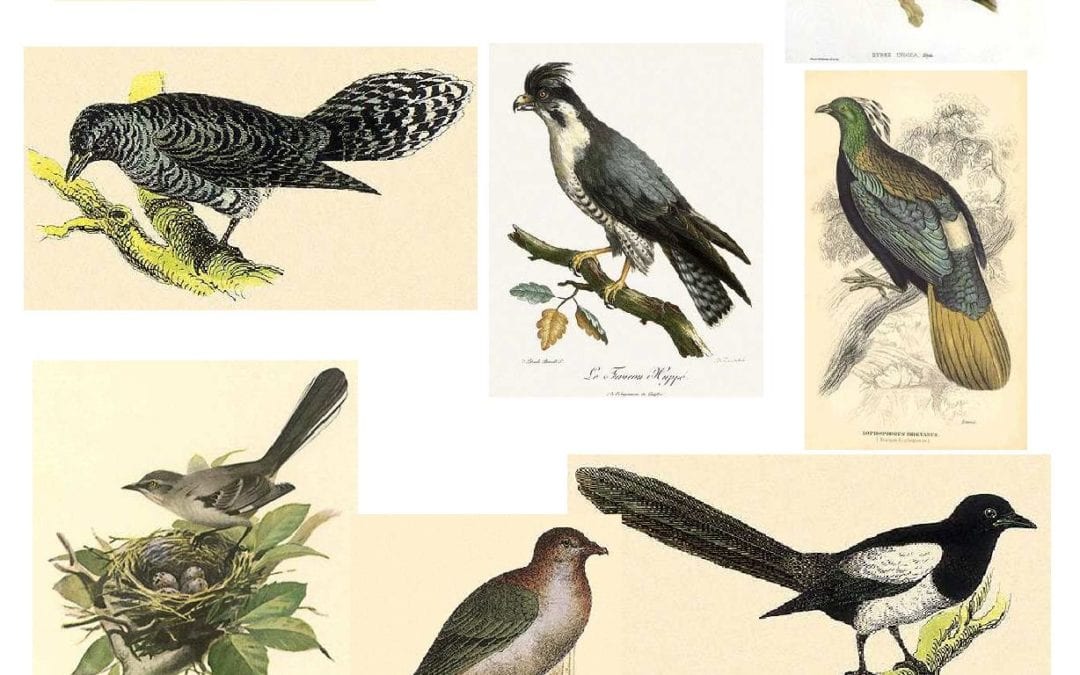
by Pigeon Patrol | Oct 20, 2020 | Bird Law, MBCA, Pigeon Control, Pigeon Patrol's Services
What Is The Bird Protection Law?
Most species of birds in Canada are protected by the bird law under the Migratory Birds Convention Act, 1994 (MBCA). The MBCA was passed in 1917, and updated in 1994 and 2005, to implement the Migratory Birds Convention, a treaty signed with the United States in 1916. As a result, the Canadian federal government has the authority to pass and enforce regulations [Migratory Birds Regulations (C.R.C., c. 1035)] to protect those species of birds that are included in the Convention. Similar legislation in the United States [Birds Protected By The Migratory Bird Treaty Act] protects birds species found in that country, though the list of bird species protected by each country can be different.
“Migratory birds” are defined by Article I of the Convention which names the families and subfamilies of birds protected, and provides some clarification of the species included. This list is provided as a policy interpretation of Article I. Bird species not listed here may, or may not, be protected under provincial or territorial legislation, the Convention on Biodiversity, or the Species at Risk Act (2002). Persons making any decisions regarding the protected status of a bird species in Canada should consult these other statutes. Environment and Climate Change Canada requires that all three criteria below be met to qualify a species for the list of bird species protected in Canada under the MBCA.
Protected Birds
Most Common Protected Birds
- Swallows.These birds generally have a short bill, long pointed wings, and a deeply forked tail. They arrive seasonally and build their mud nests under eaves and patio covers. Swallows fly to and from their nests thousands of times a day and employ “aerial foraging” to capture flying insects in their beaks.
- Woodpeckers. These sharp-billed birds tap trees and wood surfaces an average of 8,000-12,000 times per day, leaving deep, round holes 3 to 5cm in diameter. They generally have a very long tongue (up to four inches) with a glue-like substance on the tip for catching insects. They also have bristle-like feathers over their nostrils to keep wood particles from being inhaled.
- Canada Geese. These large birds feed on grasses, sedges, waste grain and berries. They can see more than 180 degrees horizontally and vertically, and they can travel more than 1,000 kilometers a day while migrating. Some geese live up to 24 years in the wild. The birds can cause major damage to turf grass due to foraging and fecal contamination. A single goose can defecate every 20 minutes and leave up to 1.5 pounds each day.
- Gulls.These large, clever birds can drink both fresh and salt water. They vary in size from the Little Gull (120 g and 29 cm) to the large Great Black-Beaked Gull (1.75 kg and 75 cm). They will eat seed, fruit and leftovers of human meals. The mounds of gull droppings can damage boats, streetlights and coastal rooftops. The bacteria, fungal agents and ectoparasites found in gull droppings can carry such diseases as histoplasmosis, encephalitis, salmonella and meningitis.
Unprotected Birds
Unprotected birds include the Pigeon, House Sparrows, & European Starling. They are not covered in the bird law
Pigeons are the largest of the 3 species, at about 12 inches long, and weigh 12 to 17 ounces. They typically are blue-gray with 2 black bands on the wings, and a black band on the tail that contrasts with its white rump (Figure 3). Color ranges from all white to mottled brown to sooty black. They are larger than the tawny-brown mourning doves that are native to the US and protected by federal and state regulations.
House Sparrows are the smallest of the unprotected birds at about 6½ inches long and weighing less than an ounce (Figure 1). Both genders are mostly brown with black streaks above and grayish below. Males have a black throat-bib flanked by white spots. Immature male house sparrows look like females. Do not confuse house sparrows with native sparrows (i.e., chipping sparrow, grasshopper sparrow, song sparrow) that are beneficial and protected by federal and state regulations.
European starlings are robin-sized, short-tailed black birds about 8½ inches long, and weigh about 3 ounces. Plumage color changes with gender and season (Figure 2). In summer, adults are glossy black with light speckles. In winter, birds have larger speckles, making them look browner from a distance. The dark pointy beak becomes bright yellow in spring. Both males and females have pinkish-red color on their legs. Other native “blackbirds” (e.g., red-winged blackbird and common grackle) and are protected by federal and state regulations
Species Range
All 3 species of unprotected birds are found throughout the northeast, especially where there are people and human-altered environments.
Health and Safety Concerns
These birds can carry and transmit diseases that are infectious to humans. Diseases of particular concern include aspergillosis, histoplasmosis, psittacosis, and salmonellosis. In addition, all 3 species may pose significant hazards with bird-aircraft strikes at airports.
General Biology, Reproduction, and Behavior
Reproduction
Female house sparrows lay 3 to 9 eggs in a single clutch, and may nest twice a year beginning in early April. Female starlings lay 4 to 6 eggs per clutch and can also nest twice a year. Pigeons mate year-round, but most of their 5 to 6 broods produced annually are raised during the spring and summer, when temperatures are above freezing. Females usually lay 2 eggs per clutch.
Nesting/Denning Cover
Nests of house sparrows are messy piles of grasses, string, paper, and twigs that fill a void or crevice where the nest is placed
Source
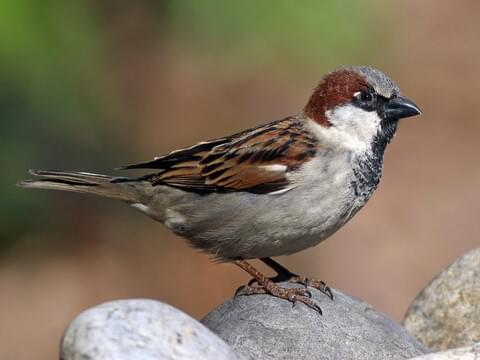
About Pigeon Patrol:
Pigeon Patrol Products & Services is the leading manufacturer and distributor of bird deterrent (control) products in Canada. Pigeon Patrol products have solved pest bird problems in industrial, commercial, and residential settings since 2000, by using safe and humane bird deterrents with only bird and animal friendly solutions. At Pigeon Patrol, we manufacture and offer a variety of bird deterrents, ranging from Ultra-flex Bird Spikes with UV protection, Bird Netting, 4-S Gel and the best Ultrasonic and audible sound devices on the market today.
Contact us at 1- 877– 4– NO-BIRD, (604) 585-9279 or visit our website at www.pigeonpatrol.ca
Bird Gone, Pigeon Gone, Seagull Gone, Pigeon problems, pigeon spikes, 1-877-4NO-BIRD, 4-S Gel, Bird Control, Pigeon Control, bird repellent, Bird Spikes, bird law sonic bird repellent, stainless steel bird spikes, bird spikes Vancouver, Ultra Sonic Bird Control, Bird Netting, Plastic Bird Spikes, Canada bird spike deterrents, Pigeon Pests, B Gone Pigeon, Pigeon Patrol, pest controller, pest control operator, Bird law pest control technician, Pigeon Control Products, humane pigeon spikes, pigeon deterrents, pigeon traps, Pigeon repellents, Sound & Laser Deterrents, wildlife control, raccoon, skunk, squirrel deterrent, De-Fence Spikes, Dragons Den, Canada bird spikes, Canada pigeon, pigeon control, pigeon patrol, pigeon. Kill pigeons, crow, starling, Pigeon Habitat,
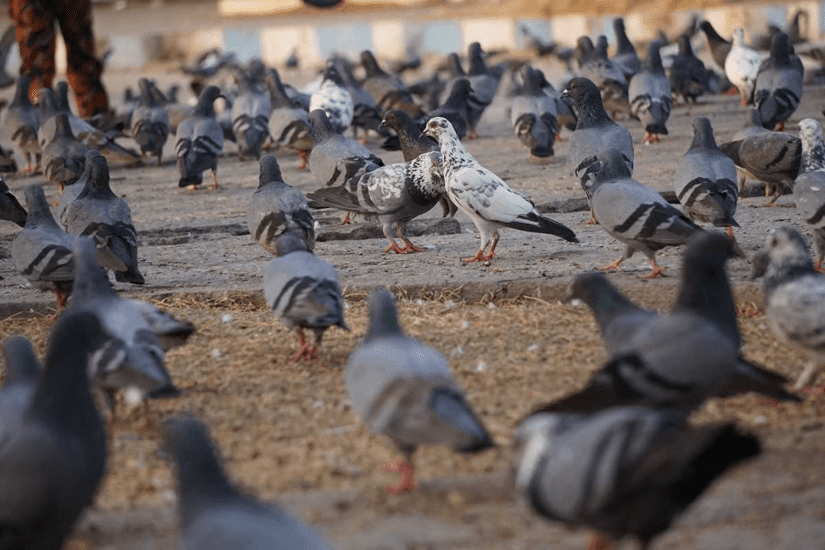
by Pigeon Patrol | Jun 29, 2020 | 4-S Gel Bird repellent, Animal Deterrent Products, Bird Deterrent Products, Bird Netting, Bird Spike, Bird Spikes, Pigeon Control, Pigeon Droppings, Pigeon Patrol's Services, Pigeon Spikes, Pigeons in the News, UltraSonic Bird Control
Pigeon Habitat. Pigeons prefer grains for food and people will commonly feed pigeons unintentionally by spilling food or it in open trash containers. Pigeons roost in areas above ground and will readily nest in steeples, as well as voids on outside areas of buildings and other protected areas.
Pigeons are dependent on humans to provide them with food, roosting and nesting sites. They are commonly found around agricultural areas as well as warehouses, feed mills, and grain elevators. They are also commonly found in cities around parks, buildings, bridges, and any other structures.
Source
About Pigeon Patrol:
Pigeon Patrol Products & Services is the leading manufacturer and distributor of bird deterrent (control) products in Canada. Pigeon Patrol products have solved pest bird problems in industrial, commercial, and residential settings since 2000, by using safe and humane bird deterrents with only bird and animal friendly solutions. At Pigeon Patrol, we manufacture and offer a variety of bird deterrents, ranging from Ultra-flex Bird Spikes with UV protection, Bird Netting, 4-S Gel and the best Ultrasonic and audible sound devices on the market today.
Contact us at 1- 877– 4– NO-BIRD, (604) 585-9279 or visit our website at www.pigeonpatrol.ca
Bird Gone, Pigeon Gone, Seagull Gone, Pigeon problems, pigeon spikes, 1-877-4NO-BIRD, 4-S Gel, Bird Control, Pigeon Control, bird repellent, Bird Spikes, sonic bird repellent, stainless steel bird spikes, bird spikes Vancouver, Ultra Sonic Bird Control, Bird Netting, Plastic Bird Spikes, Canada bird spike deterrents, Pigeon Pests, B Gone Pigeon, Pigeon Patrol, pest controller, pest control operator, pest control technician, Pigeon Control Products, humane pigeon spikes, pigeon deterrents, pigeon traps, Pigeon repellents, Sound & Laser Deterrents, wildlife control, raccoon, skunk, squirrel deterrent, De-Fence Spikes, Dragons Den, Canada bird spikes, Canada pigeon, pigeon control, pidgon patrol, pigeon. Kill pigeons, crow, starling, Pigeon Habitat




